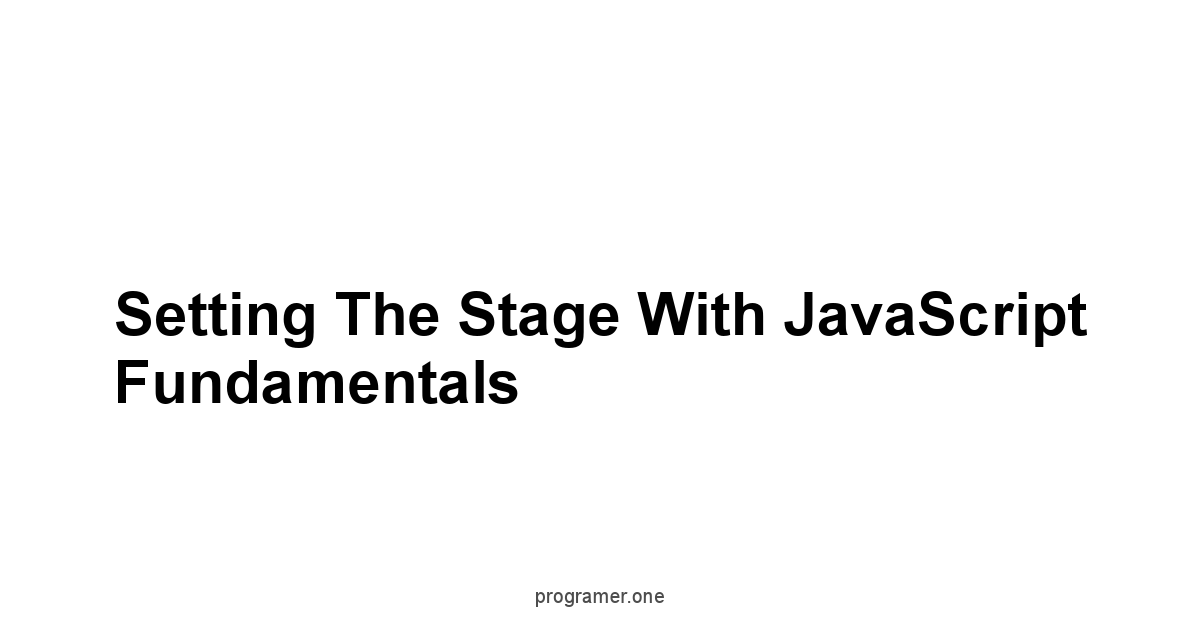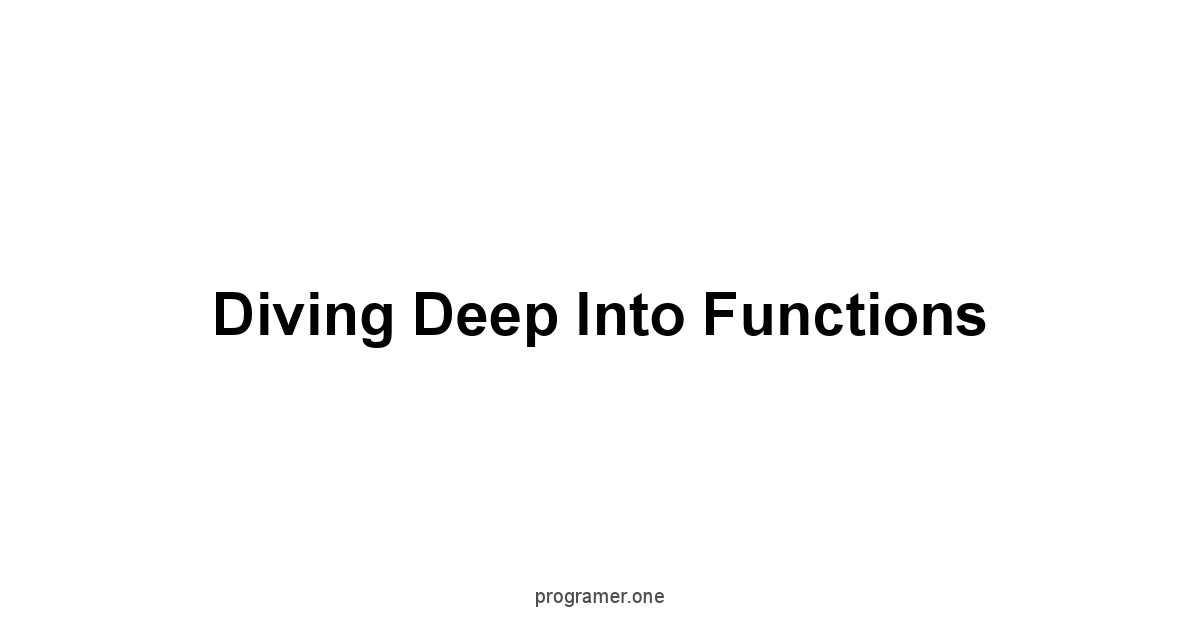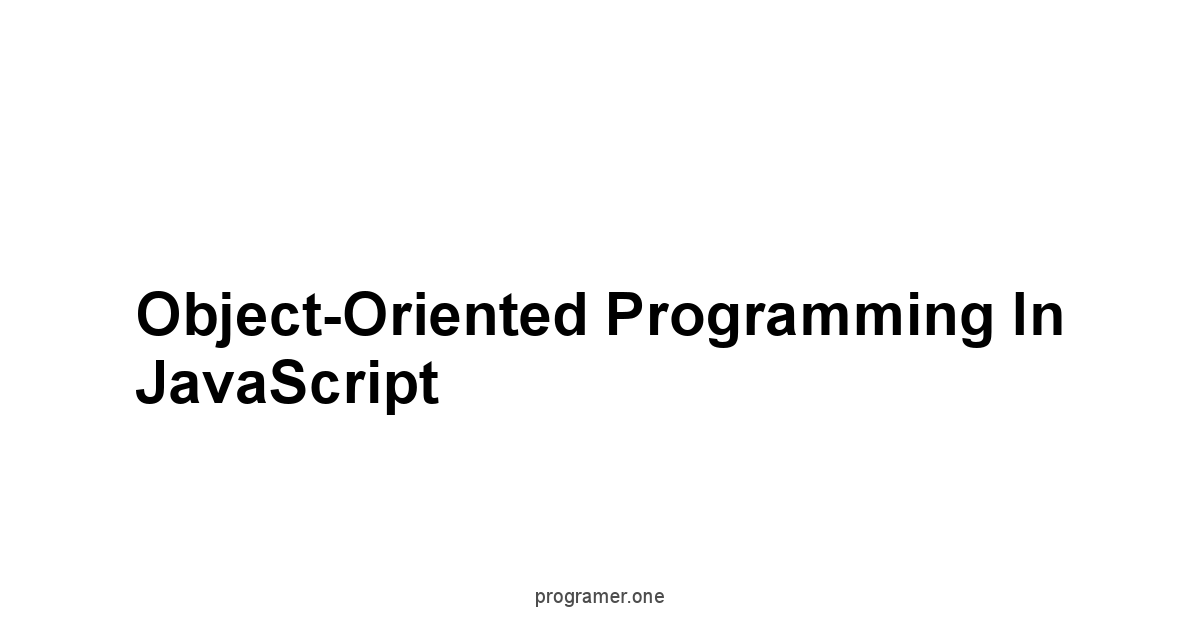You want to talk JavaScript? The language that makes those flat web pages jump.
We’ll start with the basics, the ground floor stuff: variables, data types, operators, some if-thens, and those loops that never quit.
Almost every website uses this stuff, so pay attention, 98% of them, at least.
Variables are like your labeled coffee mugs.
You got let for the coffee you’ll drink later, the stuff that changes, and const for the whiskey you’re saving, the stuff that stays put. Data types, they’re just labels.
Like what you’re drinking, Is it a Number like 99.99 for the tab, a String like “I need another,” a Boolean like is true or false Am I drunk? true, or a Null like an empty glass, or Undefined, like the tab that’s not there yet. The ingredients for your cocktail, really.
These basics are like knowing your alphabet before you start writing a novel. Now, operators. Think of them as the verbs. Arithmetic, like + to add up the damage, - to subtract from your wallet, * to multiply your bad decisions, and / to split the bill. Then, you have = to assign what you owe and those comparison operators ==, ===, and != to see if the bartender is cheating you. And logical operators like && AND if you are drunk and have money, || OR if you’re either drunk or have money, and ! NOT if you’re neither of those. It’s about transforming values and seeing what’s what.
Next, conditionals. They’re how your code makes decisions.
Like if the bar is too loud, you might need to go to a quieter one.
The if statement, if the temperature is over 20, you’ll say it’s warm.
You use else when the if doesn’t fit, and else if for when things get complicated.
The ternary operator is for those quick if-else choices, like age >= 18 ? "Buy him a drink" : "water for you". switch for more cases like switching bars based on the day. It gives your code some brains.
Loops are for doing the same thing again and again. Like getting another round, another, and another.
for loops for a set amount of times, while loops for as long as you can keep drinking, do...while for at least one more drink, and for...in and for...of for going through the bar and figuring out who else is drunk.
Loops do the repetitive work for you so you don’t have to, like that time you kept saying the same joke to the bartender.
Then, there are functions. The reusable blocks of code that do a specific job.
Like the bartender knowing how to mix your drink, a function is defined using the keyword function, then the name, parameters, and what it does in the body.
You use it by calling it with let sum = add5, 3,. Parameters are placeholders, and you can use many different kinds, even one that can handle all of them rest parameters.
Scope and Closures, they handle access.
The scope defines where you can get your hands on something, closures are about functions remembering things.
Anonymous functions, functions with no name, like the callbacks you do the next morning to figure out what happened.
Arrow functions, short and sweet like the message you send to someone you met in the bar.
Finally, object-oriented programming, OOP.
Everything is an object, with properties and actions.
Like a person object who has a name and an age, and they can do things with methods, these functions that belong to the objects, you use object literals to define them with let person = { name: "John", age: 30 },. All this stuff is the core of making bigger and better things.
It’s not just about making things work, it’s about making them work right. So, let’s keep going, shall we?
Setting the Stage with JavaScript Fundamentals

Alright, let’s get down to it. JavaScript.
It’s the language of the web, the thing that makes websites more than just static pages.
Before we build skyscrapers, we need to lay the foundation.
Think of this section as our concrete mixer, getting all the basic ingredients ready.
We’ll start with the basics, the simple stuff, and then we’ll move onto the more complex things.
Don’t rush it, we need to understand each step before we move on.
This is the beginning, but it’s also the most important part.
We are starting from the ground up.
We are talking about the very basics of JavaScript, the things you absolutely need to know before you move on to anything else. This is not optional, it’s essential.
We’ll start with variables and data types, then move on to operators, conditional statements, and loops.
By the end of this section, you’ll have a solid understanding of JavaScript’s basic tools, and we’ll have a good platform to build upon.
Think of it like gathering the materials for your next project, we need to make sure we have everything ready and in place.
Understanding Variables and Data Types
Variables are how we store information, like putting tools in a toolbox. It’s how we keep track of things.
We use the let or const keywords to declare a variable.
let is for variables that might change, const is for those that stay the same. For example:
let age = 30;– This declares a variable namedageand assigns it the value of 30.const name = "John";– This declares a constant namednameand assigns it the value of “John”.
Data types tell us what kind of information we’re dealing with. In JavaScript, we’ve got several types. Here are some basic data types we use often:
- Number: Represents numeric values, both integers, and floating-point numbers.
- Example:
let count = 10;orlet price = 99.99;
- Example:
- String: Represents a sequence of characters, such as text.
- Example:
let message = "Hello, world!";orlet lastName = 'Doe';
- Example:
- Boolean: Represents logical values, either
trueorfalse.- Example:
let isAdult = true;orlet isComplete = false;
- Example:
- Null: Represents the intentional absence of any object value.
- Example:
let user = null;
- Example:
- Undefined: Represents a variable that has been declared but has not yet been assigned a value.
- Example:
let result; // result is undefined
- Example:
You also have more complex data types like Objects and Arrays, which we’ll get to later. Think of them as bigger toolboxes for our tools.
Here’s a simple table to help you understand these basics
| Data Type | Description | Example |
|---|---|---|
| Number | Numeric values | let age = 25; |
| String | Textual data | let name = "Alice"; |
| Boolean | true or false values |
let isDone = true; |
| Null | Intentional absence of a value | let value = null; |
| Undefined | Variable declared but not assigned a value | let x; |
Variables are the basic building blocks of our programs.
Understanding these simple concepts is the first step toward writing effective JavaScript.
It’s like learning the alphabet before writing a novel, it is necessary to know the basic building blocks before you create anything more advanced.
Working with Operators
Operators are what we use to perform actions on variables and values.
These are the workhorses that allow us to make calculations, comparisons, and manipulations.
Let’s break them down, so we know what they do and how we can use them.
- Arithmetic Operators: These are used for mathematical calculations.
+Addition:let sum = 5 + 3;// sum is 8-Subtraction:let difference = 10 - 4;// difference is 6*Multiplication:let product = 6 * 7;// product is 42/Division:let quotient = 20 / 5;// quotient is 4%Modulus remainder:let remainder = 15 % 4;// remainder is 3++Increment:let x = 5; x++;// x is now 6--Decrement:let y = 10; y--;// y is now 9
- Assignment Operators: These are used to assign values to variables.
=Assignment:let x = 10;+=Addition assignment:x += 5;// x is now 15 same as x = x + 5-=Subtraction assignment:x -= 3;// x is now 12 same as x = x – 3*=Multiplication assignment:x *= 2;// x is now 24/=Division assignment:x /= 4;// x is now 6
- Comparison Operators: These are used to compare values and return a boolean result.
==Equal to value comparison:5 == "5";// true type coercion===Equal to value and type comparison:5 === "5";// false!=Not equal to value comparison:5 != "6";// true!==Not equal to value and type comparison:5 !== "5";// true>Greater than:10 > 5;// true<Less than:3 < 7;// true>=Greater than or equal to:10 >= 10;// true<=Less than or equal to:5 <= 8;// true
- Logical Operators: These are used to combine or modify boolean values.
&&Logical AND:true && false;// false||Logical OR:true || false;// true!Logical NOT:!true;// false
Operators are the tools that let us do more than just store values, they let us manipulate and make decisions based on the data we have.
They are the gears in the engine of our programs, each performing a specific task, and all working together to produce the results we desire.
Understanding these operators is fundamental to writing any program, because they are the actions we perform on data.
Controlling Program Flow with Conditionals
Conditionals are how we make decisions in our programs.
They’re like the forks in the road, the point where our program chooses a path based on certain conditions.
We use if, else if, and else statements to control this flow.
If something is true, we do this, if it’s not, we do something else, it’s that simple.
ifstatement: Executes a block of code if a condition is true.let temperature = 25, if temperature > 20 { console.log"It's warm.", }elsestatement: Executes a block of code if theifcondition is false.
let temperature = 15,
} else {
console.log”It’s cold.”,else ifstatement: Checks multiple conditions in sequence.
let score = 85,
if score >= 90 {
console.log”A Grade”,
} else if score >= 80 {
console.log”B Grade”,
console.log”C Grade or lower”,- Ternary Operator: A shorthand for simple
if-elsestatements. It’s useful for one-line decisions.
let isAdult = age >= 18 ? “Adult” : “Minor”, - Switch statement: Another way to handle multiple conditions, especially when you’re comparing a variable to different values.
let day = “Monday”,
switch day {
case “Monday”:
console.log”Start of the week”,
break,
case “Friday”:
console.log”Weekend is near”,
default:
console.log”Mid-week”,
Note: Thebreakstatement is important to prevent fall-through to the next case.
Conditional statements are the brains of our program, allowing them to react to different situations and make informed decisions.
Without them, our programs would just execute the same instructions every time, regardless of the context.
They allow your program to adapt to different scenarios, making it more dynamic and useful.
| Conditional Statement | Description | Syntax Example |
|---|---|---|
if |
Executes code if a condition is true | if condition { // code } |
else |
Executes code if the if condition is false |
if condition { // code } else { // code } |
else if |
Checks multiple conditions in sequence | if condition1 { // code } else if condition2 { // code } else { // code } |
| Ternary Operator | Shorthand for simple if-else statements |
let result = condition ? valueIfTrue : valueIfFalse; |
switch |
Checks a variable against multiple cases | switch variable { case value1: // code; break; case value2: // code; break; default: // code; } |
Conditionals are fundamental to creating responsive applications.
They allow the program to make decisions based on the input it receives and the current state of the program.
They provide the essential flexibility you need for any real-world application.
Mastering Loops for Iteration
Loops are how we repeat actions in our code, they’re what makes our lives easier as programmers.
Instead of writing the same code over and over, we can use a loop to perform the same task multiple times.
Let’s take a look at different kinds of loops in Javascript.
forloop: This is the most common type of loop, perfect for iterating a known number of times.
for let i = 0, i < 5, i++ {
console.logi, // Output: 0, 1, 2, 3, 4Initialization: Sets the starting value.Condition: Checks if the loop should continue.Increment/Decrement: Updates the counter.
whileloop: Executes a block of code as long as a condition is true.
let count = 0,
while count < 3 {
console.logcount, // Output: 0, 1, 2
count++,do...whileloop: Similar towhile, but executes the code block at least once before checking the condition.
let num = 0,
do {
console.lognum, // Output: 0, 1, 2
num++,
} while num < 3,for...inloop: Iterates over the properties of an object.Let person = { name: “Alice”, age: 30, city: “New York” },
for let key in person {
console.logkey + “: ” + person,for...ofloop: Iterates over the values of an iterable object like arrays or strings.
let colors = ,
for let color of colors {
console.logcolor,
Loops are what turn tedious tasks into simple ones.
They make our code more concise and easier to maintain.
It’s not efficient to write something more than once, especially if it is repetitive.
Loops allow us to iterate through datasets, modify arrays, and do all sorts of cool things without repeating code.
Think of them as automation tools, letting us perform many actions with just a few lines of code.
| Loop Type | Description | Syntax Example |
|---|---|---|
for |
Repeats code a specific number of times | for let i = 0; i < 5; i++ { // code } |
while |
Repeats code as long as a condition is true | while condition { // code } |
do...while |
Repeats code at least once, then as long as a condition is true | do { // code } while condition; |
for...in |
Iterates over the properties of an object | for let key in object { // code } |
for...of |
Iterates over the values of an iterable object | for let value of iterable { // code } |
Mastering loops is crucial for any type of programming, because they enable us to handle repetitive actions efficiently and reduce our workload. They’re what makes coding practical and powerful.
Diving Deep into Functions

Now that we have the basics under our belt, it’s time to talk about functions.
Functions are the workhorses of our program, and they’re what allows us to create reusable blocks of code.
They take inputs, perform tasks, and produce outputs.
Think of them as specialized tools in our toolbox, they are designed for a specific job, and they help you keep your code organized and modular.
In this section, we’ll cover the various aspects of functions, including how to define, call, and work with them.
Functions are where our programs really start to become modular and manageable.
We’ll explore how to define functions, use parameters, understand scope and closures, work with anonymous functions, and delve into the world of arrow functions.
Functions are the cornerstone of well-structured, reusable code.
They’re what make complex programs manageable, because we can break down the big problems into small, solvable steps. Let’s dive in and get to work.

Defining and Calling Functions
Defining a function is like creating a tool, you specify what it does and how it works, and then you can use it whenever you need to.
The basic syntax for defining a function in JavaScript is as follows:
function functionNameparameter1, parameter2 {
// Code to be executed
return result, // Optional return statement
}
functionkeyword: This indicates the start of a function definition.functionName: The name you give to your function. Use a descriptive name that reflects what the function does.parameters: Input values passed to the function optional.{...}: The code block that the function executes.returnstatement: The value the function returns optional.
For example, let’s create a function that adds two numbers:
function adda, b {
return a + b,
To use the function, we need to call it, like this:
Let sum = add5, 3, // Call the add function with arguments 5 and 3
console.logsum, // Output: 8
Here, we’re calling the add function with arguments 5 and 3. The function executes and returns the sum of 5 + 3, which is assigned to the sum variable.
Functions help you organize your code.
Instead of writing the same code block multiple times, you can define it as a function and call it whenever needed, making your code cleaner and more efficient.
It’s like having all the tools you need, all easily accessible and ready to use, so your work can be much more efficient.
| Aspect | Description | Example |
|---|---|---|
| Defining a function | Specifies the function’s name, parameters, and body | function adda, b { return a + b; } |
| Calling a function | Executes the function’s code | let sum = add5, 3; |
| Parameters | Input values passed to the function | function greetname { console.log"Hello, " + name; } |
| Return value | Value the function returns | function multiplyx, y { return x * y; } |
Defining and calling functions are fundamental aspects of structured programming.
They enable code reuse, modularity, and easier debugging, which will help us as we move forward.
Understanding Function Parameters
Function parameters are how we pass data into functions.
They act as placeholders for the values that the function will use when it’s called.
We can have zero, one, or multiple parameters, and the values passed into the function when it is called are called arguments.
Let’s take a look at some examples to make it more clear:
- Single Parameter:
function greetname {
console.log”Hello, ” + name + “!”,
greet”Alice”, // Output: Hello, Alice!Thegreetfunction has one parameter calledname. When the function is called, the argument"Alice"is passed, and the function uses it to print a greeting. - Multiple Parameters:
function calculateArealength, width {
return length * width;
let area = calculateArea10, 5,
console.logarea, // Output: 50ThecalculateAreafunction takes two parameters:lengthandwidth, and it uses them to calculate and return the area. - Default Parameters: You can set default values for parameters, which are used when no argument is provided for that parameter during a function call.
function powerbase, exponent = 2 {
return Math.powbase, exponent,Console.logpower3, // Output: 9 exponent defaults to 2
console.logpower3, 3, // Output: 27 - Rest Parameters: Allow you to pass an indefinite number of arguments to a function as an array. They are denoted by
...before the parameter name.
function sumAll…numbers {
let total = 0,
for let num of numbers {
total += num,
}
return total,
console.logsumAll1, 2, 3, 4, // Output: 10 - Passing by Value vs Passing by Reference: When you pass primitive types such as numbers, strings or booleans, the value is copied to the function parameter, making it a pass by value. For objects such as arrays, the reference to the object is copied to the function parameter, therefore making it a pass by reference.
Parameters make your functions flexible and reusable, because we can adapt their behavior by passing different values each time you call them.
It allows us to make these functions as generic or as specific as we need them to be, depending on what our program needs.
They are like the inputs on a machine, we get different results depending on the inputs we give it.
| Parameter Feature | Description | Example |
|---|---|---|
| Single parameter | Function takes one input value | function greetname { console.log"Hello, " + name; } |
| Multiple parameters | Function takes multiple input values | function suma, b { return a + b; } |
| Default parameters | Parameters with default values if no arguments are provided when calling the function | function powerbase, exponent = 2 { return Math.powbase, exponent; } |
| Rest parameters | Allows indefinite number of arguments, which can then be accessed as an array | function sumAll...numbers { // return sum of numbers } |
Understanding function parameters and arguments is important to writing versatile and reusable code.
They allow us to create modular and flexible programs, able to work with different values each time you call the functions.
Exploring Scope and Closures
Scope and closures are two key concepts in JavaScript, and understanding them is crucial for writing clean, maintainable, and bug-free code.
Scope refers to where in your code you can access a variable.
Closures are related to scope and they are about a function remembering its environment even after it has finished executing.
Let’s break it down:
- Scope:
- Global Scope: Variables declared outside any function are in the global scope. They can be accessed from anywhere in your code.
let globalVar = "I am global", function test { console.logglobalVar, // Accesses the global variable test, - Local/Function Scope: Variables declared inside a function are in the local scope. They can only be accessed within that function.
let localVar = “I am local”,console.loglocalVar, // Accesses the local variable// console.loglocalVar, // Error! localVar is not defined here
- Block Scope: Variables declared with
letorconstinside a block{}are only accessible within that block.
if true {
let blockVar = “I am in block”,
console.logblockVar, // Accesses the block variable
}// console.logblockVar, // Error! blockVar is not defined here
- Global Scope: Variables declared outside any function are in the global scope. They can be accessed from anywhere in your code.
- Closures: A closure is a function that remembers its outer environment the scope where it was created even after the outer function has finished executing.
function outerFunctionouterVar {
return function innerFunctioninnerVar {
console.logouterVar + ” ” + innerVar,
}
let myClosure = outerFunction”Hello”,
myClosure”World”, // Output: Hello WorldIn this example,innerFunctionis a closure because it remembersouterVarfrom its surrounding scope even afterouterFunctionhas finished executing.
Closures are often used in callbacks, event handlers, and other advanced JavaScript patterns.
Scope and closures help prevent variable conflicts and allows us to write cleaner and more efficient code.
It allows us to create private variables that can only be accessed through specific functions.
They are important tools that every JavaScript developer needs to master.
| Concept | Description | Example |
|---|---|---|
| Global Scope | Variables declared outside any function, accessible from anywhere. | let globalVar = "global"; function test { console.logglobalVar; } |
| Local Scope | Variables declared inside a function, only accessible within that function. | function test { let localVar = "local"; console.loglocalVar; } |
| Block Scope | Variables declared with let or const inside a block, accessible within that block. |
if true { let blockVar = "block"; console.logblockVar; } |
| Closures | Function remembers its outer environment even after the outer function finishes. | function outerx { return function innery { console.logx + y; } } let myClosure = outer1; myClosure2; |
Scope and closures are key concepts in understanding how JavaScript works.
They are foundational to many other advanced patterns and best practices.
Working with Anonymous Functions
Anonymous functions are functions without a name.
You can define them in line when you need a small function, especially when you need a callback.
They are mostly used with higher-order functions or when you need to pass a function as an argument.
We’ll take a look at different use cases and examples here.
Here are some ways we can use anonymous functions:
- Function Expressions: You can assign an anonymous function to a variable.
let add = functiona, b {
return a + b,
},
console.logadd5, 3, // Output: 8 - Callbacks: Anonymous functions are commonly used as callbacks, which are functions passed as arguments to another function.
function doSomethingcallback {
console.log”Starting operation…”,
callback, // Execute the callback
console.log”Operation complete.”,
doSomethingfunction {
console.log”Callback executed.”,
}, - Event Handlers: Anonymous functions can be used to handle events in the browser.
<button id="myButton">Click Me</button> <script> document.getElementById'myButton'.addEventListener'click', function { alert"Button Clicked!", }, </script> In this case, the anonymous function is executed when the button is clicked. - Array Methods: Anonymous functions are often used with array methods such as
map,filter, andforEach.
let numbers = ,
let doubled = numbers.mapfunctionnum {
return num * 2;
console.logdoubled, // Output:
Anonymous functions make your code more concise and they’re very useful when you only need a small function in a specific place.
They help us make our code more flexible and powerful, especially with asynchronous tasks and event handlers.
Understanding anonymous functions is crucial for mastering advanced JavaScript techniques.
| Use Case | Description | Example |
|---|---|---|
| Function Expression | Assigning an anonymous function to a variable | let greet = function { console.log"Hello"; }; greet; |
| Callbacks | Passing an anonymous function as a callback | doSomethingfunction { console.log"Callback"; }; |
| Event Handlers | Using an anonymous function to respond to events | button.addEventListener'click', function { alert"clicked"; }; |
| Array Methods | Using anonymous functions with array methods like map, filter, forEach |
let numbers = ; let doubled = numbers.mapfunctionnum { return num * 2; }; |
Anonymous functions are another essential tool in our JavaScript toolbox, which allow us to write powerful and concise code.
Delving into Arrow Functions
Arrow functions provide a more concise syntax for writing function expressions.
They have a shorter, more streamlined structure compared to regular functions, and they implicitly return values, which can make your code easier to read and write.
They’re a great tool for functional programming practices, and they’ve been used a lot since they were introduced in ES6.
Here’s how they work:
- Basic Syntax:
// Regular function
function adda, b {
// Arrow function
let add = a, b => a + b, - Single Parameter: When there’s a single parameter, you can omit the parentheses.
function squarex {
return x * x;
let square = x => x * x; - No Parameters: If there are no parameters, use empty parentheses.
function sayHello {
console.log”Hello!”,
let sayHello = => console.log”Hello!”, - Multi-line Function Body: If the function body has multiple lines, you need to use curly braces
{}and thereturnstatement.
let area = length * width;
return area,
let calculateArea = length, width => { thisKeyword: Arrow functions do not have their ownthiscontext, instead, they inherit thethisvalue from the parent scope. This behavior is different from regular functions, which create their ownthiscontext. This can be very important in object-oriented programming, and especially when using classes.
Arrow functions are perfect when you need to write short function expressions, callbacks or when you’re working with array methods such as .map, .filter and so on.
They make the code look cleaner and make it more concise, which means fewer things for your eyes to scan, which is good.
| Aspect | Description | Example |
|---|---|---|
| Basic Syntax | Shorter syntax for function expressions | let add = a, b => a + b; |
| Single Parameter | Parentheses can be omitted with a single parameter | let square = x => x * x; |
| No Parameters | Use empty parentheses for no parameters | let sayHello = => console.log"Hello!"; |
| Multi-line Body | Use curly braces and return for multi-line bodies |
let area = l, w => { let a = l * w; return a; }; |
this Keyword |
Inherits this from the surrounding scope rather than creating its own |
let obj = { method: => console.logthis } |
Arrow functions provide a more concise and clear way to define functions, especially for short operations and callbacks.
Object-Oriented Programming in JavaScript

Now that we’ve covered the basics of functions, let’s move into object-oriented programming.
Object-oriented programming OOP is a programming paradigm based on the concept of “objects”, which can contain data, in the form of fields often known as attributes or properties, and code, in the form of procedures often known as methods. In JavaScript, everything is an object, and understanding how to use them will unlock another dimension of programming.
In this section, we’ll cover the core concepts of OOP in JavaScript, including objects, properties, methods, classes, prototypes, constructors, inheritance, and polymorphism.
We’ll start with objects and properties, then we’ll move onto methods, classes, prototypes, constructors, and finally, we’ll talk about inheritance and polymorphism.
Object-oriented programming is one of the most commonly used ways to build larger applications, and having a good understanding of the concepts can greatly improve how you organize your projects.
This is where we move away from the more basic scripts and move toward the next level.
Understanding Objects and Properties
In JavaScript, objects are collections of key-value pairs, like dictionaries or hashmaps in other languages.
Think of them as containers where you can store related data and functionality.
Each key in an object is a string or a Symbol, and the corresponding value can be any JavaScript data type, including other objects.
Here’s how to define an object:
- Object Literal: The most common way to create an object is using object literals. This involves using curly braces
{}and listing the key-value pairs, where the key and values are separated by a colon:.
let person = {
firstName: “John”,
lastName: “Doe”,
age: 30,
occupation: “Engineer” - Accessing Properties: You can access object properties using dot notation or bracket notation.
console.logperson.firstName, // Output: John
console.logperson, // Output: 30 - Adding Properties: You can add new properties to an object even after it’s been created.Person.city = “New York”, // Adds a new property
Person = “john.doe@example.com“, // Adds another property
- Modifying Properties: You can change the value of existing properties as needed.
person.age = 31,
person = “Senior Engineer”, - Deleting Properties: You can also remove properties from an object.Delete person.city, // Remove the city property
Delete person, // Remove the email property
- Property Names: Property names can be strings or Symbols, and they can be anything you want.
Objects are the foundation of OOP in JavaScript, and they’re used to represent real-world entities or data structures.
Properties describe the characteristics of those objects.
We use them to model real world objects or the data of our application.
Objects are very important to how we handle and organize code, so it’s important to know how they work.
| Aspect | Description | Example |
|---|---|---|
| Creation | Using object literals {} to define objects |
let person = { name: "John", age: 30 }; |
| Access | Accessing properties using dot or bracket notation | console.logperson.name; console.logperson; |
| Adding | Adding new properties after object creation | person.city = "New York"; |
| Modifying | Changing the value of an existing property | person.age = 31; |
| Deleting | Removing properties from an object | delete person.city; |
Understanding objects and properties is the first step towards mastering object oriented programming in JavaScript.
They’re how we organize data and create complex data structures.
Working with Object Methods
Object methods are functions that are properties of an object.
They’re used to define behavior that is specific to the object.
When you’re using methods, you can perform actions that involve the object’s data.
Here’s how methods work:
- Defining Methods: You define a method within an object by assigning a function to a property.
fullName: function {return this.firstName + ” ” + this.lastName,
},
greet: functiongreeting {
console.loggreeting + “, ” +
What do we think?
In wrapping up our exploration of JavaScript, we’ve moved from the very basic elements to the more sophisticated aspects of the language.
We began with variables and data types, the fundamental building blocks, and from there, we got into the details of operators and conditional statements that give our code the ability to make decisions.
We then dug into loops for iteration and functions for creating reusable blocks of code, which paved the way for understanding scope, closures, and even anonymous functions.
Now that we’ve talked about object-oriented programming principles in JavaScript, we’ve looked at objects, methods, and some other advanced topics that are crucial for writing complex applications.
The journey through JavaScript is one of continuous learning, but with this solid base of the fundamentals, you are in a strong position to take on increasingly complex projects.
We’ve seen how to use functions and objects effectively, which means we can make our code more organized and easier to manage.
The flexibility of JavaScript is one of its strengths, with object-oriented programming methods allowing for complex structures, and all of that, combined with arrow functions, asynchronous coding techniques and many more gives you all the options you need to tackle any web development challenge.
According to recent stats, Javascript has been used by over 97% of websites to make interactive user interfaces, showing how widely used it is, and how useful it can be.
Moving forward, it’s not enough to just know the basics.
It is important to dive into more advanced topics, like asynchronous programming, working with the DOM, and using different Javascript frameworks.
Don’t forget about the importance of best practices, like writing clean, reusable code.
It’s also very useful to stay updated on the latest features, like ES6 and ES Next, which continually add power and flexibility to the language.
This journey from the basics to advanced concepts is like learning to build with any material: you start with simple blocks, then move onto complex structures, and finally, you create a finished project.
The more time and energy you put into this, the better you will get.
Keep practicing, stay curious, and never stop exploring what JavaScript can do.
With this foundation, you’re ready to create amazing things for the web, you just need to keep building.
Remember, the best way to learn is to do, so get coding.
Frequently Asked Questions
What’s the deal with variables in JavaScript?
Variables are how we store information.
Think of them as containers for data, like a box for tools.
We use let for variables that can change and const for those that stay the same.
It’s straightforward, like labeling your equipment.
What are the main types of data I’ll be working with?
We have Numbers, Strings, Booleans, null, and undefined. Numbers are for anything numeric, like an age or a price. Strings are for text, like a name. Booleans are for true or false values.
null means “no value” and undefined is when a variable is declared but not assigned anything yet.
They are the basic ingredients we have for our recipes.
How do I use operators in JavaScript?
Operators are the workhorses of JavaScript. They do the math, make comparisons, and assign values. +, -, *, / are for arithmetic, ==, ===, != are for comparison, and =, +=, -= are for assignment. They allow us to manipulate the data we are working with.
What do conditionals like if and else do?
The if statement executes code when something is true, else is when it’s false, and else if checks multiple conditions.
They allow your program to make choices, like a fork in the road.
Why do we need loops in our code?
Loops are how we repeat code.
for loops are for a specific number of times, while loops go on as long as the condition is true, do...while goes at least once and then goes on as long as the condition is true.
for...in goes over the properties of an object, and for...of goes over values of an iterable object.
We don’t want to repeat ourselves as programmers, so we use loops to make the computer do the boring repetitive tasks.
What exactly are functions, and why do I need them?
Functions are blocks of code that perform a specific task.
You define them, call them, and they can take inputs and return outputs.
They help us organize our code and make it reusable, just like having different tools for different jobs.
What’s the difference between parameters and arguments?
Parameters are placeholders in the function definition, and arguments are the actual values you pass when you call the function.
It’s the difference between the recipe and the ingredients you are using.
What’s the deal with scope and closures?
Scope is where variables are accessible, globally or inside functions or blocks.
Closures are functions that remember their environment even after the outer function has finished.
They can be tricky, but they are a useful tool to have in your toolkit.
What are anonymous functions good for?
We use them in line, especially as callbacks or when we need a function only once.
They make your code more concise, and keep it to the point.
What’s the point of arrow functions?
Arrow functions are a shorter way to write functions.
They are more concise than regular functions and inherit this from their surrounding scope. It makes our code clearer and easier to read.
What are objects in JavaScript?
Objects are collections of key-value pairs.
They let us organize data and functionality in a structured way.
They can have properties and methods, which are the tools we use to deal with that data.
How do I work with methods inside an object?
Methods are functions that are properties of objects. They are the actions that an object can perform.
They give our objects the ability to interact with the data it contains.




